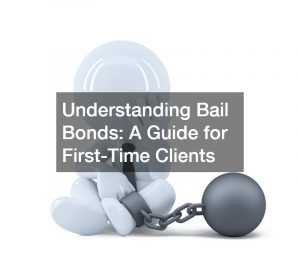Personal injury cases are a serious matter. When you fully know that someone else is at fault for your pain and suffering, it is only right that you receive just compensation for their carelessness. Medical treatment and hospital bills stack up quickly, and that’s not mentioning the emotional pain you have to go through, and having the person at fault to cover all of these expenses should be the bare minimum.
However, this information is but the tip of the iceberg, and there are more intricacies to personal injury cases that the vast majority do not know. As a result, people who fall victim to personal injury cases feel a false sense of security due to the sensationalized settlements posted online. To address this growing issue of the lack of awareness and information on personal injury, we will be discussing the fundamental aspects that build a strong claim.
Degree Of Personal Injury
As the name suggests, the cornerstone of a strong personal injury claim is the degree of personal injury obtained. If an individual or business is the direct cause for your injury and requires immediate medical attention, or worse, surgery, the stronger your case will become. Likewise, this concept also goes both ways in terms of severity. If the degree of personal injury obtained is very mild or hard to prove, your settlement’s value also decreases proportionately.
Mild Cases
Examples of mild cases include acute lower back pain or small bruises, and while no one can deny that these hurt, they are by no means life-threatening or don’t require extensive medical treatment to resolve. By nature, these personal injury claims are also harder to prove that they were directly caused by something or someone because of the degree of injury. Consequently, these do not strengthen your claim and bring down the full value of the settlement.
Severe Cases
On the opposite end, we have severe cases; these include traumatic brain injury, fractures, permanent impairment, and even cases where amputation is necessary to keep the plaintiff alive. Due to the degree of injury and their life-threatening nature, the full value of these claims skyrocket. Now, you might think the plaintiffs feel more at ease because they can get more out of their settlement, but take note that no price tag could ever be placed on the terrible months of treatment, surgery, and medical procedures they have to endure.

Understanding Comparative Fault
Secondly, we also need to address the concern of comparative fault, which is admitting how much of the incident was at the defendant’s responsibility and how much of it was equally caused by the plaintiff’s negligence. Of course, from the plaintiff’s perspective, emotion can take over, and they could argue that it was 100% the fault of the defendant. However, this isn’t always the case, and whoever is most at fault will affect what percentage of the settlement will be met.
Prove Related To Accident
Medical records, pictures of the incident, photos of the location where the injury took place, and all relevant evidence are necessary for proving the relative fault of each party. The more you can prove that it was 100% the defendant’s fault that led to the personal injury, the chances of you getting 100% of the settlement value also increase. Likewise, if you were 50% at fault for the injury, you can expect to get only up to 50% as well because these terms are inversely proportional.
Pay Settlement Value
Lastly, we also need to understand the last step of the personal injury claim process, which is the payment of the settlement amount. Conventionally, you would think that once the case is closed and a final amount is settled, this marks the end of the problem, and you can receive compensation. However, the reality of the process is not as smooth, and there’s more to it than just payment.
Defendant’s Insurance
Now, despite the high values on settlements, these aren’t always met because of the defendant’s insurance. When a personal injury claim is filed, it’s the defendant that has to pay, and if they have no means of paying, there’s not much that the court can do to intervene. These usually occur when you’re filing a personal injury claim against an individual who may or may not have insurance on their car and the like.
Settlement Period
As for the settlement period, these can significantly vary from case to case as there are many elements of a personal injury that have to be considered. The fastest you could expect would be a week if the process proceeds smoothly, and it could take upwards of a year or even more as the weight of the case becomes heavier.
Seek Professional Guidance
Overall, if you find yourself in a predicament where you need to file a personal injury claim, don’t rely solely on this information alone and seek professional guidance from a personal injury attorney. While being knowledgeable and aware is vital, nothing can beat an expert’s help, so don’t take matters into your own hands.



